Mint (Mentha spp.) is one of the easiest and most rewarding herbs to grow indoors. Its refreshing aroma, fast growth, and culinary versatility make it a must-have for home gardeners. Whether you’re in an apartment, a house without a yard, or simply want fresh herbs at your fingertips year-round, an indoor mint garden is the perfect solution. Plus, it adds greenery and a delightful fragrance to your home.
Benefits of Growing Mint Indoors
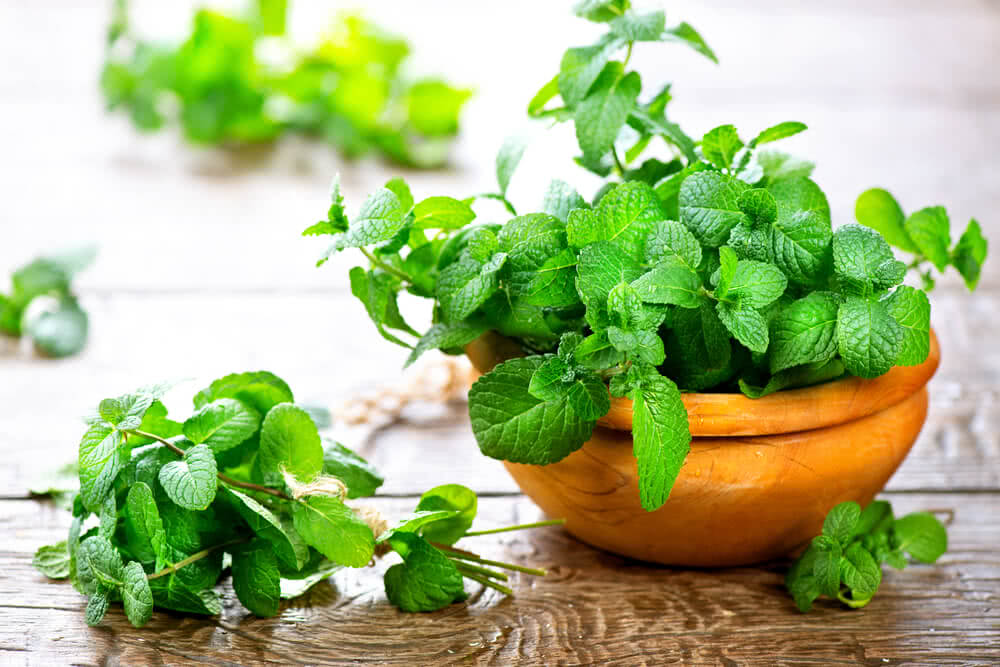
- Fresh Supply Year-Round: Indoor mint gardens provide constant access to fresh leaves for teas, salads, desserts, and more.
- Natural Air Freshener: The crisp, cool scent of mint acts as a natural deodorizer for your home.
- Low Maintenance: Mint is resilient, quick to grow, and forgiving of minor care mistakes.
- Pest-Resistant Indoors: While mint can be aggressive outdoors, growing it in pots indoors helps control its spread and limits exposure to pests.
- Aesthetic Appeal: Lush mint adds a vibrant green touch to kitchens, balconies, and windowsills.
Choosing the Right Variety
While there are dozens of mint types, some are better suited for indoor cultivation. Popular options include:
- Spearmint (Mentha spicata): Milder, perfect for cooking and drinks.
- Peppermint (Mentha × piperita): Stronger flavor, great for teas and desserts.
- Chocolate Mint: Has a subtle cocoa aroma.
- Apple Mint: Fruity and less pungent.
Choose based on your taste preference and intended use. Spearmint and peppermint are the most common and beginner-friendly.
Best Containers for Indoor Mint
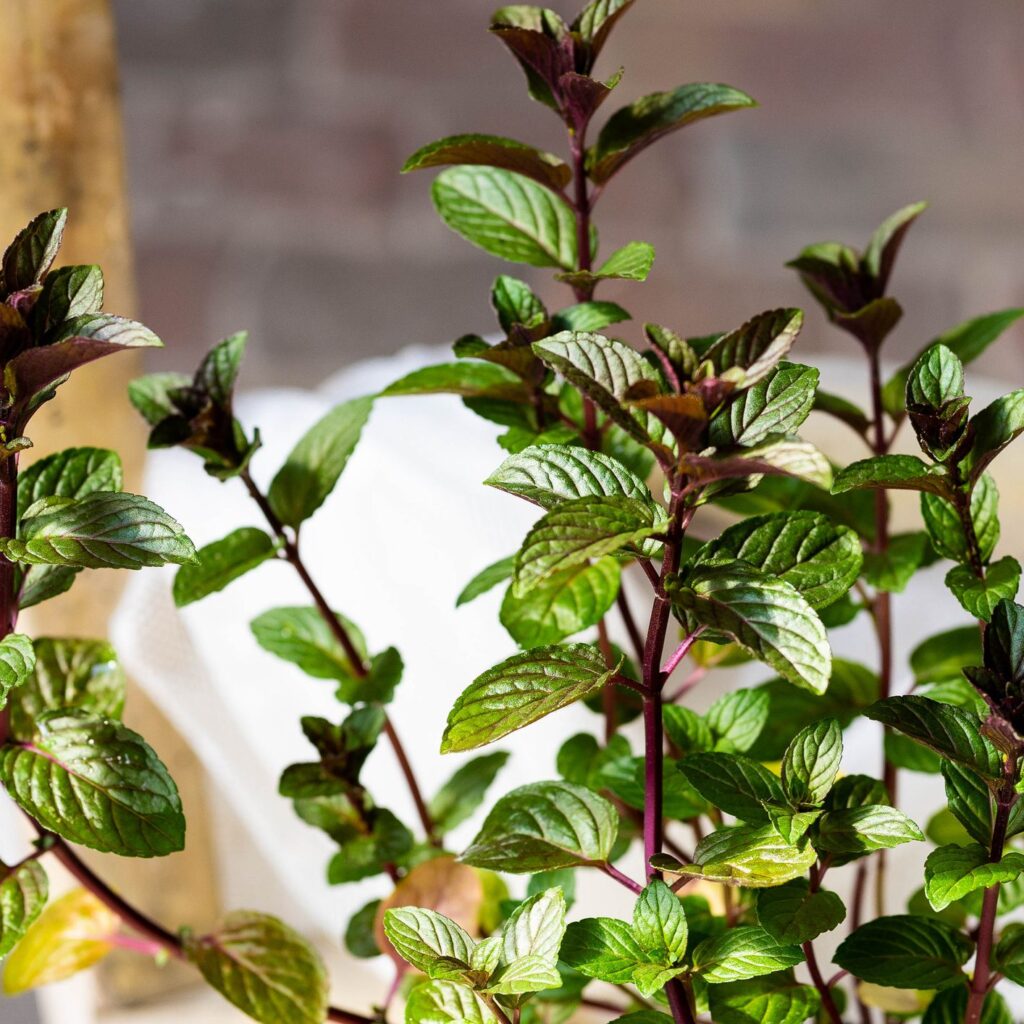
Mint grows best in containers, as it can become invasive if allowed to spread. Consider the following container features:
- Size: Minimum 8–10 inches deep and wide for healthy root development.
- Material: Terracotta, ceramic, or plastic pots are all acceptable.
- Drainage: Ensure your pot has drainage holes to prevent root rot.
You can also grow mint in hanging baskets or rectangular balcony planters.
Soil Requirements
Use a light, well-draining potting mix that retains moisture without becoming soggy. A good blend includes:
- Regular potting soil
- Perlite or coarse sand for drainage
- Compost or worm castings for nutrients
Avoid heavy garden soil, which can compact in pots and cause waterlogging.
Light Requirements
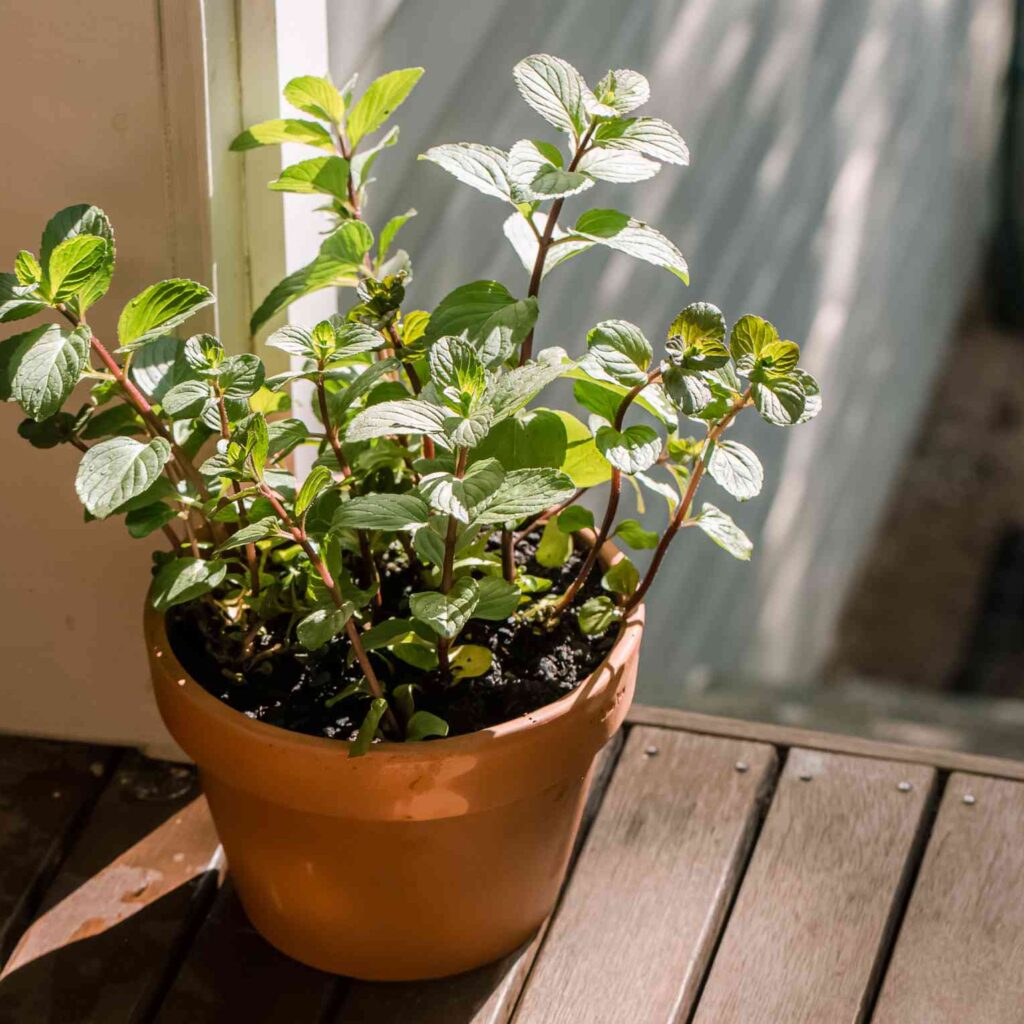
Mint thrives in bright, indirect light. Place the pot near a south-facing or east-facing window where it can get at least 4–6 hours of light daily.
If natural light is limited, consider using LED grow lights to supplement. Set the grow light 6–12 inches above the plant and keep it on for 12–14 hours per day.
Watering Mint Indoors
Mint enjoys consistently moist soil, but not waterlogged. Follow these tips:
- Water when the top inch of soil feels dry.
- Use a watering can with a narrow spout to reach the base of the plant.
- Avoid wetting the leaves regularly to prevent mold or mildew.
- Reduce watering slightly in winter when plant growth slows.
Tip: Use self-watering pots or place a tray with pebbles and water under the pot for humidity without overwatering.
Fertilizing Your Indoor Mint
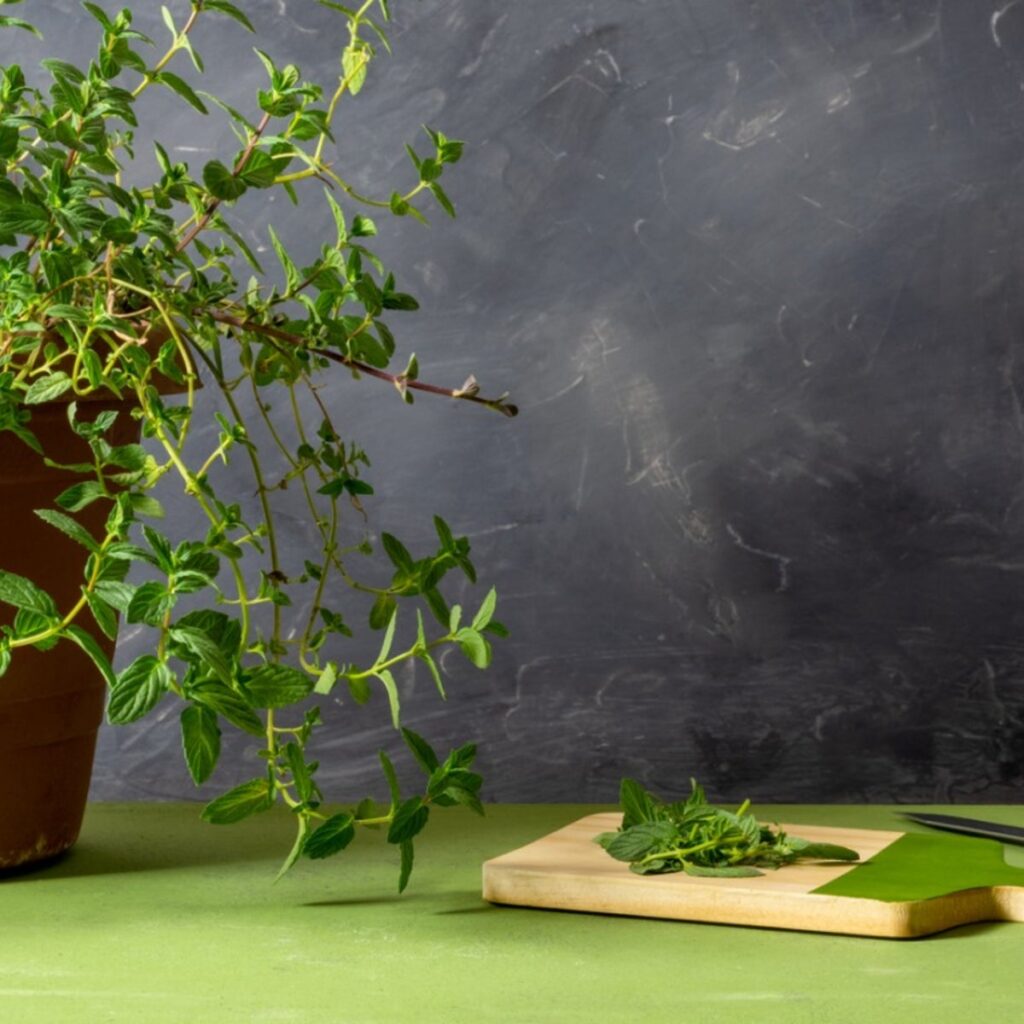
Mint doesn’t require heavy feeding, but a small nutrient boost helps it stay lush:
- Use a diluted liquid organic fertilizer (like fish emulsion or seaweed extract) once every 3–4 weeks during active growth (spring and summer).
- Avoid over-fertilizing, which can affect flavor intensity.
- In fall and winter, reduce feeding to once every 6–8 weeks or stop completely.
Pruning and Harvesting
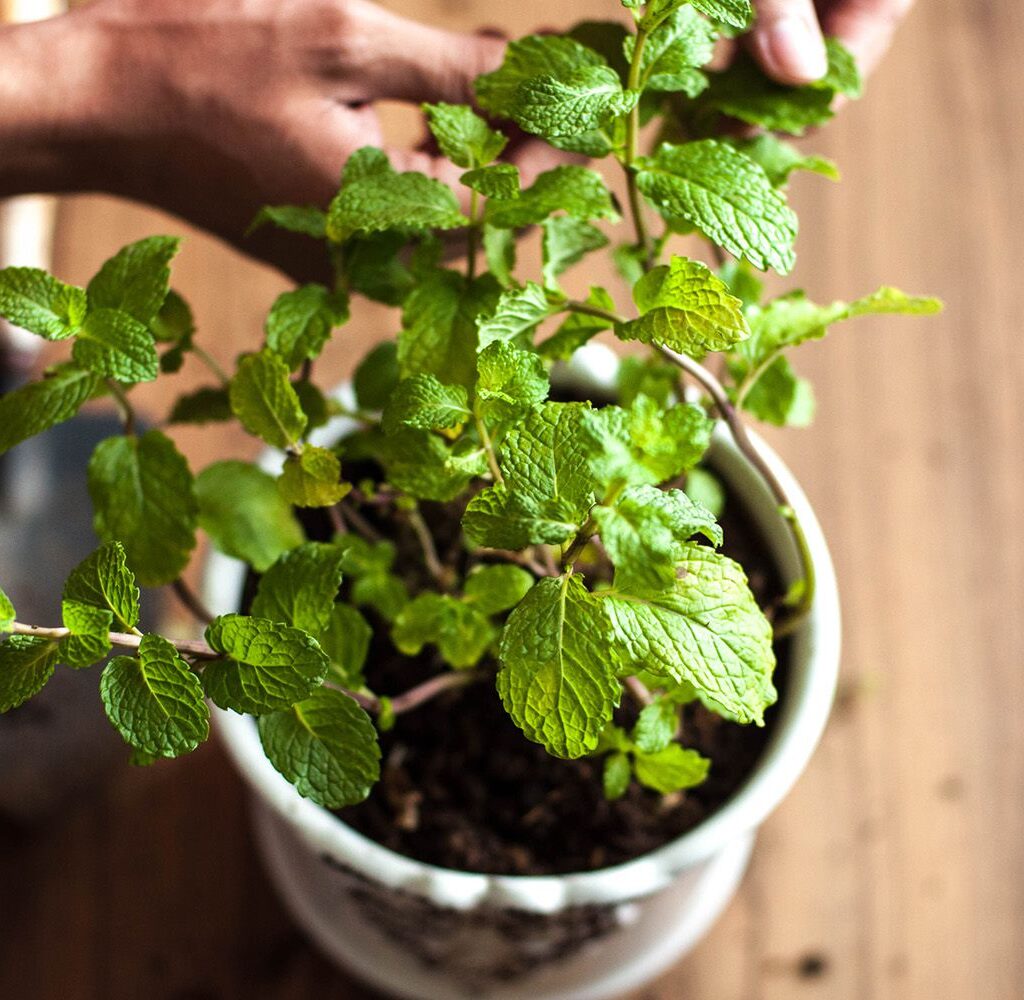
Regular pruning encourages bushy growth and prevents legginess. Here’s how:
- Begin harvesting when the plant reaches about 4–6 inches tall.
- Pinch or snip off top leaves regularly to encourage side growth.
- Don’t remove more than one-third of the plant at a time.
- Remove flowering stalks to focus energy on leaf production.
Frequent harvesting also improves the flavor and keeps the plant in check.
Propagating Mint from Cuttings
One of the best parts about mint is how easily it propagates. To propagate:
- Snip a healthy 4–6 inch stem just below a leaf node.
- Remove the lower leaves.
- Place the stem in a glass of water near a bright window.
- Change the water every 2–3 days.
- Once roots develop (in 7–10 days), plant it in soil.
This is a great way to expand your mint collection or share with friends.
Dealing with Common Issues
Even indoors, mint can face challenges:
- Yellowing Leaves: Overwatering or poor drainage. Check pot and soil.
- Leggy Growth: Not enough sunlight. Move to a brighter spot or add grow lights.
- Pests: Rare indoors, but occasionally spider mites or aphids may appear. Use neem oil spray or wash with soapy water.
- Powdery Mildew: Avoid wetting leaves, increase airflow, and prune regularly.
Keeping a close eye on your mint plant will help catch any problems early.
Companion Herbs for Indoor Gardening
Mint grows well with some herbs but not all. For a fragrant indoor herb garden, consider planting these in separate pots near each other:
- Basil
- Parsley
- Oregano
- Chives
Avoid planting mint with other herbs in the same pot—its aggressive root system may choke out neighbors.
Creative Indoor Mint Garden Ideas
- Mason Jar Mint Planters: Line up decorative jars on your kitchen window.
- Vertical Herb Wall: Use hanging pockets or wall-mounted containers for a green display.
- Tiered Planters: Stack different varieties of mint in cascading planters for aesthetic appeal.
- Teacup Herb Garden: Grow a small mint plant in a repurposed teacup for charm and function.
Conclusion: A Simple Step to Greener Living
Creating an indoor mint garden is not only easy—it’s also highly rewarding. With minimal effort, you can enjoy fresh, fragrant leaves at your fingertips year-round. From teas and mojitos to garnishes and aromatherapy, mint has countless uses in your daily life.
By following the simple care tips above, you’ll ensure a thriving, vibrant indoor mint garden that beautifies your space, purifies your air, and enhances your home with the refreshing touch of nature.


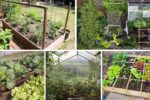

Leave A Comment